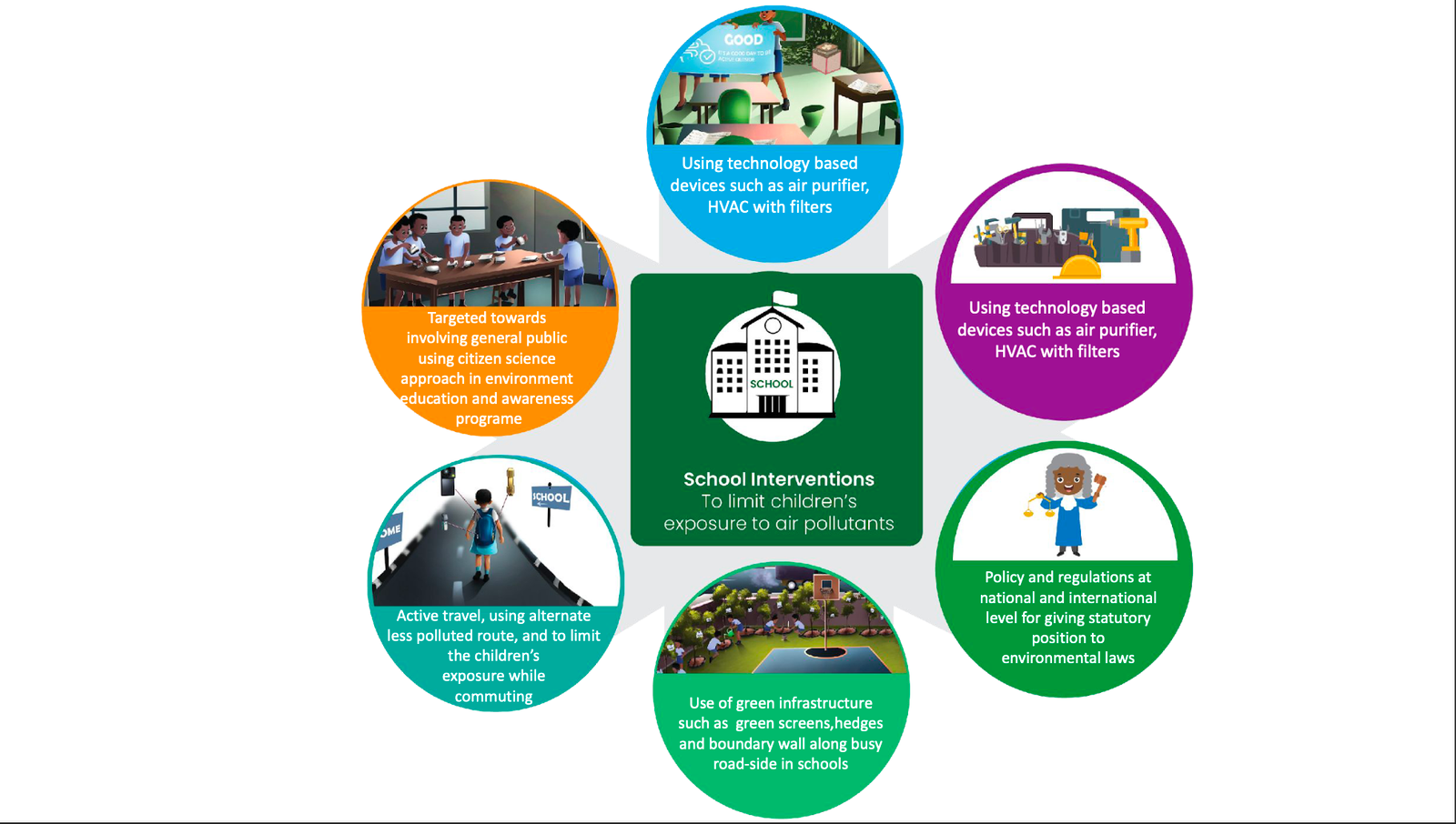
Interventions for Schools to Improve Air Quality and Promote Health in Africa
In African schools, where HVAC systems are often unavailable, practical interventions can help mitigate air pollution and improve student well-being. Key strategies include:
- DIY Air Purifiers:
- Use low-cost box fans with filters to reduce particulate matter (PM2.5) in classrooms.
- Engage students in assembling these purifiers as part of science lessons, fostering environmental awareness and practical skills.
- Vegetation Barriers:
- Plant trees, hedges, and shrubs around school premises to block and absorb air pollutants.
- Focus on indigenous plants that thrive in the local climate and improve both air quality and the aesthetic environment.
- Policies for School Location:
- Advocate for policies to avoid building schools near high-pollution zones such as factories, highways, or bus depots.
- Implement zoning regulations that prioritize locating schools in areas with better air quality and access to green spaces.
- Building Sustainable Schools:
- Construct eco-friendly classrooms with natural ventilation and light to reduce dependence on mechanical systems.
- Incorporate green roofs or walls to further enhance air quality and insulation.
- Educational Behavior Programs:
- Integrate air pollution awareness into school curricula, teaching students about air quality monitoring and mitigation strategies.
- Encourage sustainable behaviors such as walking or biking to school, reducing pollution at the source, and sharing data with the community.
These interventions, tailored to the African context, empower schools to manage air quality with locally viable solutions, promoting healthier environments for students to learn and thrive.